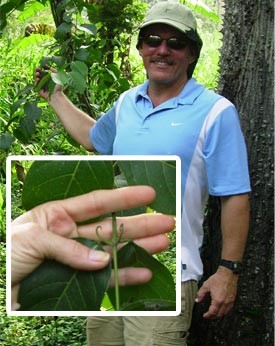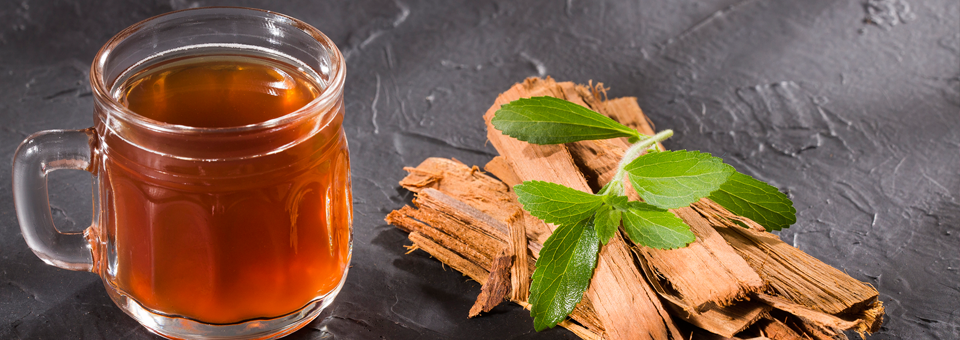There are a powerful group of Amazon flu-fighters that kick your immunity into high gear. But I uncovered an even more powerful immune defender on my journey to the heart of the rainforest.
I was with my friend and guide Octavio. The paved road we were traveling on turned to dirt, and eventually the dirt road ended. Octavio and I boarded a boat, and headed deeper into the jungle.
Finally we got to Puerto Ocopa, the last jungle outpost and home to the Ashaninka.
Octavio told me that just 30 years ago, the Ashaninka were thriving in this area, with their traditions, diet and culture intact.

Cat’s claw in the Amazon
But terrorists devastated their population. Then the Peruvian government took their land. The Ashaninka natives welcomed Octavio with open arms. They treated me like a member of the family, too.
With a history going back thousands of years, the Ashaninka have a profound knowledge of the healing herbs of the Amazon. And this was my last chance to try and preserve that knowledge because their natural habitat was all but gone.
I was especially looking for a woody vine called cat’s claw.
The Ashaninkas have used it for thousands of years to support sinus and digestive health, treat inflammation, cure wounds and boost immunity.
Today, clinical studies are validating what these traditional healers have known for centuries… Cat’s claw increases your immunity to help fight disease more effectively.
In one study, a group of volunteers were given 350 mg of cat’s claw or a placebo twice daily. After eight weeks, the number of white blood cells in the cat’s claw group increased substantially.1
A second study of healthy adults given cat’s claw for six weeks noted the same results.2
Cat’s claw works by stimulating NK cell function. You see
, your immune system has its own “hit squad” of natural killer (NK) cells. At the first sign of infection, these white blood cells flood your bloodstream. They seek out and target cells that are cancerous or show signs of becoming cancerous.Once these mutant cells are identified, the NK cell releases a chemical called perforin. This compound fires a hole in the malignant cell’s outer membrane that rips it apart. This triggers a mechanism known as apoptosis — or cell death.
In an animal study at Boston Children’s Hospital, NK cells were shown to reduce tumor growth and prolong survival in mice with lymphoma (blood cancer).3
In another study, researchers ramped up the NK activity of mice with melanoma. Within two weeks, the cancer tumors were hardly detectable.4
The only problem is that your NK cells decline with age. Fortunately, cat’s claw helps increase the number of NK cells you have.
Providing your body with such a powerful immune defense shield is reason enough to include cat’s claw to your daily routine. But that’s not its only benefit. Research shows the bark from this woody vine can also:
|
• Reduce osteoarthritis pain5 |
• Dissolve beta-amyloid plaque formation8 |
|
• Relieve symptoms of rheumatoid arthritis6 |
• Lower blood sugar levels9 |
|
• Lower blood pressure7 |
• Repair DNA for anti-aging effect10 |
Use Cat’s Claw The Way The Ashaninkas Do
The Ashaninkas prepared a cat’s claw tea for me. It has a woodsy and slightly bitter taste. I’ve adjusted their recipe to improve the taste.
- Boil water and pour into a cup. Add a few drops of lemon juice. The acid from the lemon helps release the tannins in the tea.
- Add the bark or powder. If using the bark, one to two average-sized pieces will be enough. For the powder form, 1 to 2 teaspoons is ideal.
- Let steep for 5 to 10 minutes. Strain and add a teaspoon of raw honey or a dash of spices to taste.
You can always supplement. Look for one made from the inner bark of the plant. Take 500 mg a day.
To Your Good Health,

Al Sears, MD, CNS
1. Lamm S, et al. “Persistent response to pneumococcal vaccine in individuals supplemented with a novel water soluble extract of Uncaria tomentosa, C-Med-100.” Phytomedicine. 2001 Jul;8(4):267-74.
2. Sheng Y, et al. “Enhanced DNA repair, immune function and reduced toxicity of C-MED-100, a novel aqueous extract from Uncaria tomentosa.” J Ethnopharmacol. 2000 Feb;69(2):115-26.
3. Zhaoqing B, et al. A Rapid Embryonic Stem Cell-Based Mouse Model for B-cell Lymphomas Driven by Epstein-Barr Virus Protein LMP1. Cancer Immunol Res. 2015 Jun; 3(6): 641–649.
4. Lakshmikanth T. NCRs and DNAM-1 mediate NK cell recognition and lysis of human and mouse melanoma cell lines in vitro and in vivo. J Clin Invest. 2009 May;119(5):1251-63. doi: 10.1172/JCI36022. Epub 2009 Apr 6.
5. Piscoya J, et al. “Efficacy and safety of freeze-dried cat’s claw in osteoarthritis of the knee: mechanisms of action of the species Uncaria guianensis.” Inflamm Res. 2001 Sep;50(9):442-8.
6. Mur E et al.” Randomized double blind trial of an extract from the pentacyclic alkaloid-chemotype of uncaria tomentosa for the treatment of rheumatoid arthritis.” J Rheumatol. 2002 Apr;29(4):678-81.
7. Mashour NH, et al.” Herbal medicine for the treatment of cardiovascular disease: Clinical considerations.” Arch Intern Med. 1998;158:2225–34.
8. Snow A, et al. “The Amazon rain forest plant Uncaria tomentosa (cat’s claw) and its specific proanthocyanidin constituents are potent inhibitors and reducers of both brain plaques and tangles.” Sci Rep. 2019 Feb 6;9(1):561.
9. Domingues A, et al. “Prevention of experimental diabetes by Uncaria tomentosa extract: Th2 polarization, regulatory T cell preservation or both?” J Ethnopharmacol. 2011 Sep 1;137(1):635-42.
10. Sheng Y, et al. “DNA repair enhancement of aqueous extracts of Uncaria tomentosa in a human volunteer study.” Phytomedicine. Jul 2001; 8(4): 275-282.

